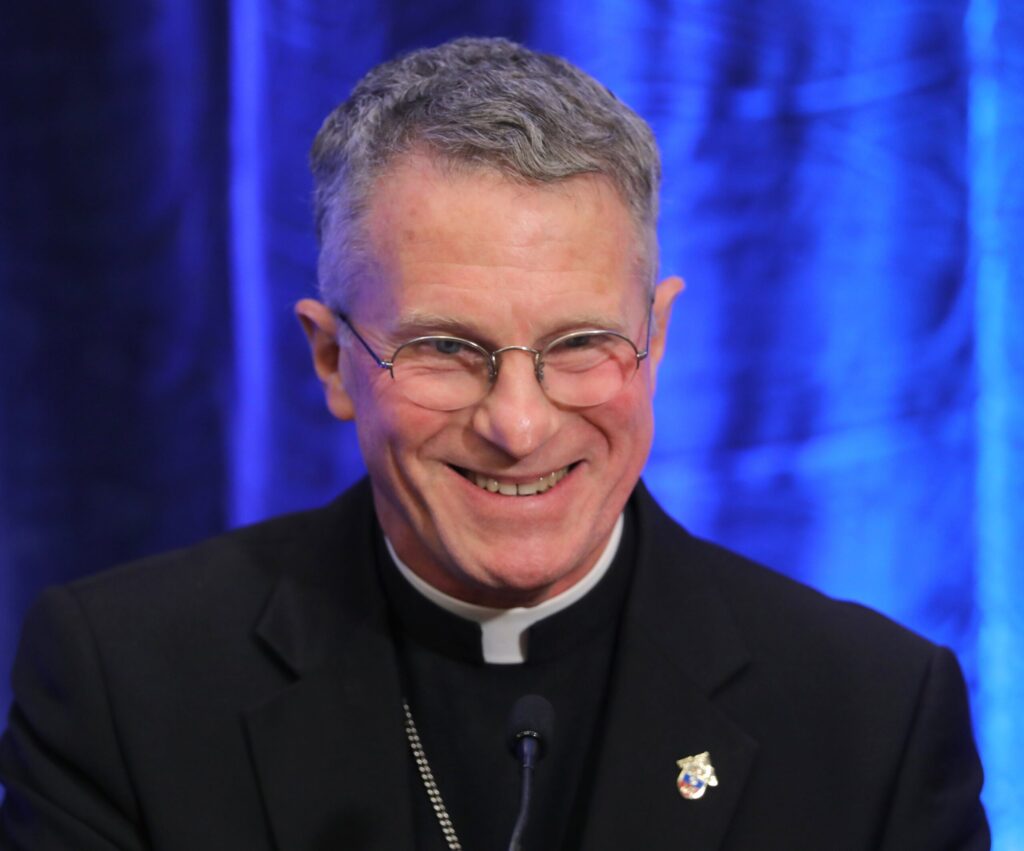
New Texts for Eucharistic Adoration, Communion Outside Mass Aim to Promote Unity
By: Our Sunday Visitor
The revised version of “Holy Communion and Worship of the Eucharistic Mystery outside Mass” will be implemented on the First Sunday of Advent, December 1, 2024

(OSV News) — Three years after being approved by the U.S. Catholic bishops, updates to the ritual texts for distribution of holy Communion outside of Mass and for Eucharistic adoration will take effect.
The revised version of “Holy Communion and Worship of the Eucharistic Mystery outside Mass” will be implemented on the First Sunday of Advent, December 1, 2024. The U.S. Conference of Catholic Bishops (USCCB) had signed off on the fresh texts at their November 2021 General Assembly in Baltimore. The revisions were then reviewed by the USCCB’s Secretariat for Divine Worship, with the Vatican confirming their liturgical use in the U.S. on March 7, 2023.
USCCB president Archbishop Timothy P. Broglio of the U.S. Archdiocese for the Military Services issued a January 25 decree of promulgation for the timeline of the text.
The ritual editions — published by Catholic Book Publishing Co., Liturgical Press, Liturgy Training Publications, Magnificat and Midwest Theological Forum — went on sale Aug. 1, with optional use of the new version permitted as of Sept. 14, the feast of the Exaltation of the Holy Cross.
Father David R. Price, associate director of the USCCB’s Secretariat of Divine Worship, told OSV News that “the main thing to keep in mind” regarding the revisions is that “this is a new translation of the ritual book that was given in Latin in the 1970s — so it’s a new translation, it’s not a new ritual book per se.”
The original text’s previous translation from Latin had been approved by the U.S. bishops in 1976.
He emphasized that “the discipline of distribution of holy Communion outside Mass that is in place now is not changing.”
At the same time, he said, “I think that’s a point where a number of people might get confused, because this text that we’re translating (is) from the 1970s, and we’ve had further instructions on the Eucharist since that time — for example, when we think about the General Instruction of the Roman Missal” — which was first issued in 2003 and has subsequently been updated — “and the norms for the distribution of Communion under both kinds (species) in the U.S.”
Father Price also pointed to the instruction “Redemptionis Sacramentum,” issued in 2004 by the Vatican’s Congregation (now Dicastery) for Divine Worship and the Discipline of the Sacraments, “which had several things to say about both extraordinary ministers and the distribution of Communion.
“All of those things that are said in those more recent documents still apply,” he said.
In its January newsletter, the USCCB’s Committee on Divine Worship said “the goal of the adaptations is to harmonize the book with existing customs for Eucharistic Adoration in this country.”
The committee cited the formal approval of several common practices during Eucharistic adoration in the U.S.: the wearing by the priest or deacon of a white cope, a full-length liturgical cape, usually made of silk or a similar material and fastened by a clasp; the singing of the hymns “O Salutaris Hostia” and “Tantum Ergo Sacramentum” in Latin and English; and the recitation of the Divine Praises at Benediction, which typically concludes Eucharistic adoration, and through which faithful receive the blessing of Jesus Christ in his Eucharistic presence. The new text permits those present to also sing a hymn, as well as reciting an acclamation, as the minister withdraws after Benediction.
In addition, the committee added “clarifying instructions” for praying the Liturgy of the Hours — the church’s ongoing, daily sequence of scriptural prayers also known as the Divine Office — during adoration.
Prior to the update, “there wasn’t a clear instruction in the rubric about how you combine these two things,” said Father Price. “So now, there’s a clear rubric that specifically says to say the collect to conclude the hour of the Divine Office, and then you go into Benediction — whereas the practice in many places was to omit the concluding collect. So there’s a clear place where the Divine Office concludes (now).”
“This new translation of the ritual should hopefully be a way for people to continue to grow and deepen in their faith and to have a sense of unity with the universal church, in that we are praying with words in English that are similar, that are the same in meaning, as words that people are praying these same prayers in other languages — and that the translations are consistent in their meaning between these different languages,” said Father Price. “And that shows the universality of the church.”
– – –
Gina Christian is a multimedia reporter for OSV News. Follow her on X.

